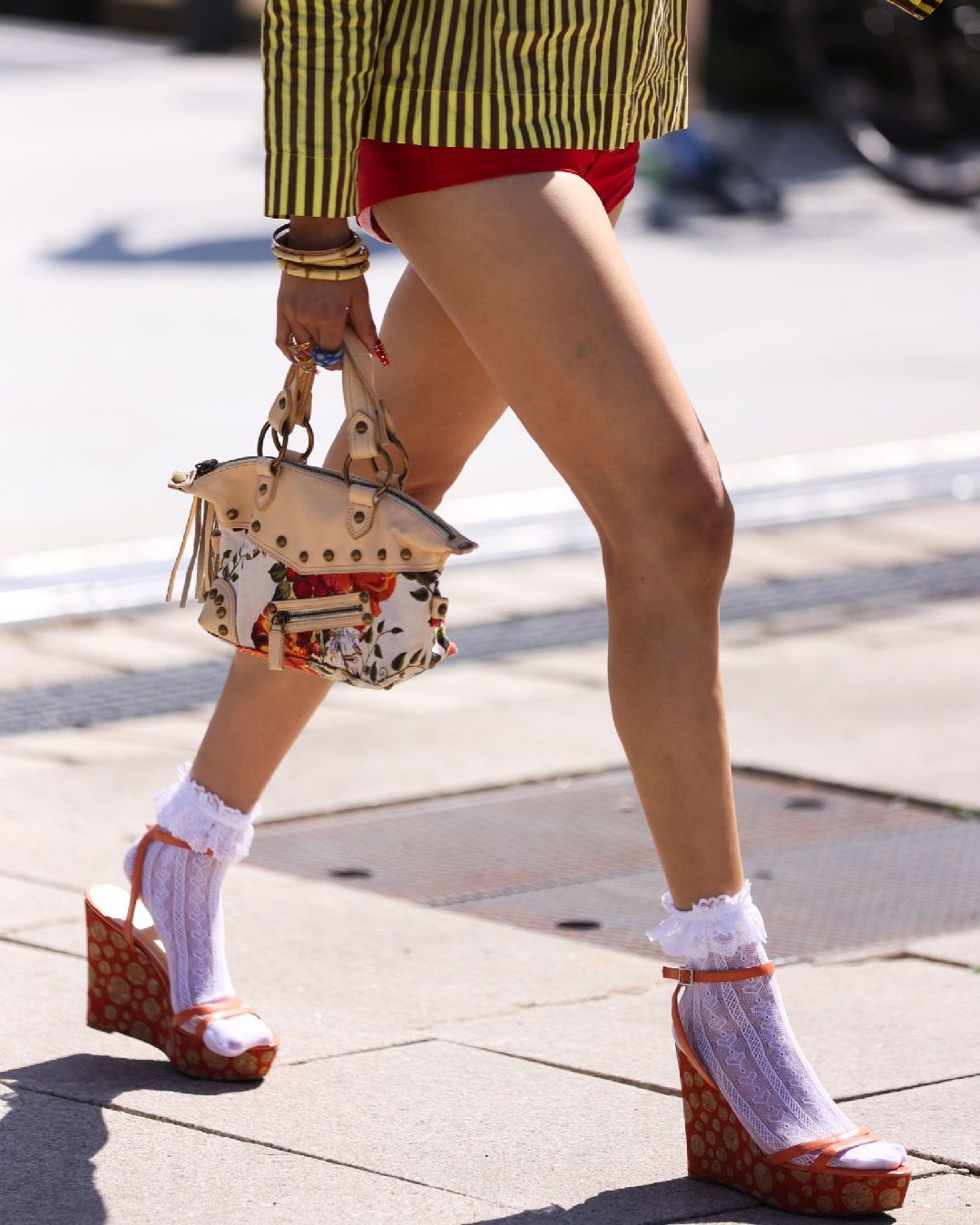
How hot weather is changing fashion And not just in terms of shopping choices
We realize that something is wrong right at the beginning of the summer sales, when we wander through the streets of the city center shopping. While the scorching sun beats down on our heads and the burning pavement returns all the heat accumulated during the day, we take a breath of fresh air as we step into the stores, where a blast of ice-cold air conditioning awaits us. As every year, international news reports claim that we are facing the hottest summer ever: in the past thirteen months, according to The Guardian, an unprecedented number of temperature records have been broken around the world. We are now aware of the reasons behind the environmental problem afflicting our planet, from the excessive consumption of fossil fuels to deforestation, from pollution caused by car exhaust to that originating from material waste (fast fashion, plastics, and so on). Led by the Copenhagen Fashion Week, a step ahead of other institutions when it comes to sustainable innovation, the fashion industry is striving to correct all the mistakes made in the past, including overproduction, the use of toxic substances and production techniques, and the accumulation of textile waste. With upcycling, the introduction of gentler washes for denim, and greater attention to long-lasting garments, fashion is responding to the increasingly pressing demand from buyers for items that respect the environment. Due to the heat, consumers' needs are changing, as are the materials and silhouettes they choose to invest in, as well as their overall shopping habits. And while customers on the streets of European shopping centers complain about air conditioning being too cold in fitting rooms, in the factories where the clothes they are trying on were made, workers are forced to work in extremely high temperatures with just a fan shared among colleagues.
@nssmagazine BONNETJE repurposes old suits to create unique pieces. From blue shirts reborn as ruched tube tops, to fabric scraps combined to form 3D floral bodysuits, and futuristic little black dresses, micro bras, and maxi skirts. The brand, founded by Anna & Yoko, protests against contemporary society and the culture of waste, breathing new life into clothes that, as the designers would say, would otherwise remain "deceased." Alongside experimental design, sustainability remains a key element driving BONNETJE's artistic direction. #fashiontiktok #interview #fashion #copenhagen #cphfw #copenhagenfashionweek #beyondfashion original sound - nss magazine
In Milan, London, New York, Paris, Berlin, and Copenhagen, it is now impossible not to be interested in sustainability. With Fashion Weeks held around the world and throughout the year, from January to March, June to August, and then all of September, the icy cold as well as the scorching heat enveloping the show venues are proof of how even fashion capitals are affected by climate change. Thanks to the example set by the Copenhagen Fashion Week, which has been striving for years to promote sustainability during one of the busiest weeks of the year, fashion is slowly learning how to contribute to the planet's preservation. "When we presented a framework showing a common direction for our community, it was welcomed with open arms," explained Cecilie Thorsmark, CEO of Copenhagen Fashion Week, to Vogue Business. "Many brands were just looking for someone to tell them what to do, rather than encouraging them to do better." Through specific requirements and standards (for example, at least 60% of the materials used for a collection must be certified as deadstock or low-impact fibers), CPHFW has shown brands what they could concretely do to make their methods more sustainable, influencing not only the creatives and executives who hold the productive power, but also the consumers, who hold the greatest power of all: the purchasing power. Six years after Thorsmark's entry as CEO of CPHFW, the European Union is about to launch new regulations for circularity, such as the requirement of a digital passport for all items sold in Europe, while other Fashion Weeks, starting with nearby Berlin, are following in the footsteps of the Danish capital.
Although fashion is mobilizing to add more and more measures to counter climate change, the heat continues to drastically influence the industry. Environmental anomalies, such as floods and drought issues in areas that did not encounter such problems until a few years ago, are having dramatic effects on the supply of raw materials, as well as on the health of workers in those lands. According to a study by the Global Labor Institute of Cornell University, the fashion industry could lose up to $65 billion by 2030 due to rising temperatures, a result that could prove tragic not only financially but also humanly - just think of the textile workers forced to work in appalling conditions, in factories located in some of the hottest places on earth. As we are about to buy yet another crop top in anticipation of next summer - which will be even hotter than this one - or while we postpone buying down jackets and sweaters on sale because we don't know if and when we will need them, the entire fashion system finds itself dealing not only with a bunch of disoriented consumers but also with more serious problems, far beyond the simple choice between a cotton or cashmere sweater. It will be up to the higher-ups to decide when to change their modus operandi, but above all how quickly to act.













































